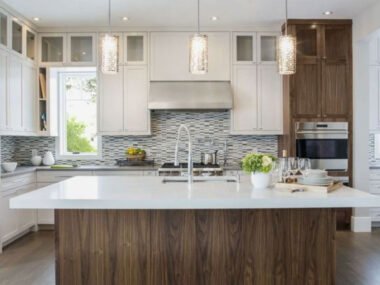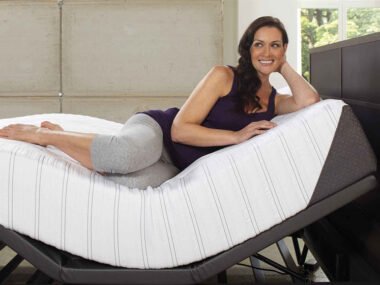A minimalist lifestyle doesn’t mean giving up everything or living in an empty space. It’s about choosing what supports your life and removing what doesn’t. Many people turn to minimalism when their homes start feeling overcrowded or hard to manage. Others are simply looking for a calmer, more organized environment.
The appeal of minimalist design lies in its clarity. Less clutter means less visual stress. Fewer decisions about what to wear, where to sit, or how to clean can free up mental space for other things. But that doesn’t mean your home has to feel cold or empty. Minimalist spaces can still feel warm, lived-in, and comfortable—you just have to be selective about what stays.
Comfort is often what people worry about when simplifying. The good news is, with the right approach, you can have both. A clean, streamlined home can still offer softness, function, and personality.
Start With the Spaces That Feel Cluttered
The first step is knowing where to begin. Start with the areas that feel the most crowded, often bathrooms, kitchens, or entryways. These rooms tend to hold a lot of items but offer limited space. When every cabinet and drawer is full, it’s time to reevaluate.
Go through each item and ask yourself whether it’s used regularly or just taking up room. Old toiletries, duplicates, and random tools can be tossed or donated. Keep what you actually reach for. You’ll start to notice how a little more space makes daily routines easier.
Bathrooms, in particular, often become catch-alls for products, towels, and storage containers. If the space feels dated or packed with items that no longer serve a purpose, it might be time for a more intentional upgrade. One area where simplicity and comfort work well together is the bathroom. If you’re ready for a more tailored solution, custom bathroom remodeling can be a smart option. This approach allows you to design the space around how it’s actually used. Hidden storage, updated finishes, and clean layouts help reduce clutter while making the room feel calm and fresh.
Bathrooms are often overlooked in design conversations, but they’re some of the most-used spaces in any home. Updating them with features that match your habits, like drawer organizers, better lighting, or open shelving, can make everyday life smoother.
When the room supports your needs without feeling crowded, you’ve created a minimalist space that’s still practical and personal.
Use Smart Storage That Blends With the Space
A big part of minimalist living is keeping what you need while storing it in a way that doesn’t overwhelm the room. It’s not just about hiding things; it’s about creating order without visual clutter. Smart storage helps maintain a clean look while keeping daily essentials close at hand.
Start by looking at the furniture you already own. Can a bench near the entry double as shoe storage? Could you replace a bulky dresser with a platform bed that has built-in drawers? Furniture that serves more than one function is useful in any minimalist space.
Built-in shelves and open storage work well in living areas and kitchens. They allow you to display only what matters—books, art, or items with a personal connection. Avoid filling every shelf. Leaving a bit of space between objects adds breathing room and makes the area feel calmer.
Sorting by category helps, too. Keep office supplies in one container, tools in another, and so on. This makes everything easier to find and avoids spreading items across multiple rooms. The goal isn’t to get rid of everything, but to keep what fits your routine.
Focus on Quality Over Quantity
Minimalism doesn’t mean stripping away all comfort. It’s about choosing items that add real value. Instead of buying several cheaper pieces of furniture, invest in one or two that are well-made and will last. Fewer items with purpose and quality help a space feel intentional.
This can apply to everything from textiles to lighting. A soft rug, well-placed lamp, or linen curtains can add texture and warmth without overcrowding the space. When you pick materials that hold up over time, you avoid the need to constantly replace or repair them.
When decorating, skip trend-driven items that lose appeal after a season. Choose neutral tones, classic shapes, and personal accents that reflect your style. A smaller number of thoughtful pieces will always feel more cohesive than a mix of random decor.
A minimalist home doesn’t have to feel blank. The key is to choose with care, keeping comfort and simplicity in mind.
Keep Surfaces Clear and Lighting Soft
Flat surfaces attract clutter. Keys, mail, receipts, and chargers tend to pile up quickly. One way to keep things under control is to give every item a home. Trays, baskets, or drawers can hold daily-use items without making the room feel messy.
In kitchens, try to keep only the most-used appliances on the counter. In living areas, limit decorations on tables to one or two things. The cleaner your surfaces look, the more open the room feels.
Lighting makes a huge impact on how a space feels. Avoid relying only on overhead lights. Add table lamps, floor lamps, or wall sconces to spread light more evenly. Soft lighting brings warmth without adding clutter.
Natural light also helps a minimalist space feel more open. Use light curtains or leave windows bare in rooms where privacy isn’t a concern. Letting in daylight can lift the mood and make even the simplest rooms feel more comfortable.
Minimalist living isn’t about giving things up. It’s about making your space work better for you. By cutting back on clutter, focusing on function, and using thoughtful design, you can create a home that feels both calm and lived-in.
Small upgrades can shift the way your space supports your lifestyle. With the right balance, minimalism doesn’t feel restrictive. It feels like space to breathe, think, and enjoy where you are.










